
The Business of Fashion
Agenda-setting intelligence, analysis and advice for the global fashion community.

Agenda-setting intelligence, analysis and advice for the global fashion community.
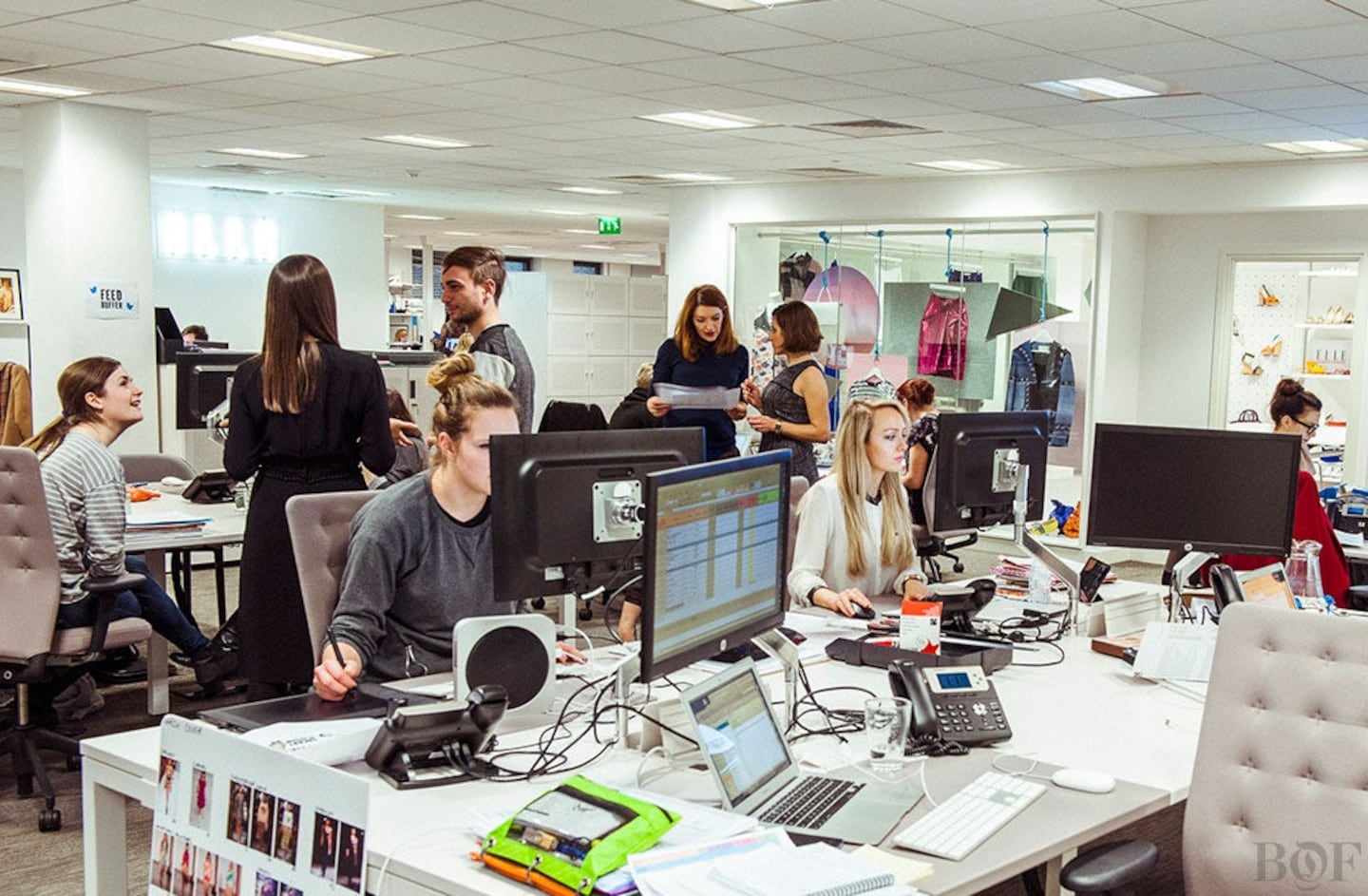
LONDON, United Kingdom — "I've got one word for you today: buffering," says Lorraine Candy, editor-in-chief of Elle (UK), to her staff at their Monday morning news conference, as she reminds them to keep lining up content for the magazine's multi-platform presence. The meeting — which kicks off with digital director Phebe Hunnicutt, formerly managing editor of AOL Women's Group, giving a run-down of stats from the previous week, highlighting which "packages" Elle "users" were picking up on — felt like it was taking place at a tech start-up rather than a pillar-of-the-establishment monthly style publication.
Today, there is no division between print and digital teams at Elle, because they are one and the same, and everyone, from fashion assistants to senior editors, presents ideas at the company's Monday morning meeting and partakes in the resulting discussion. Quietly watching the proceedings and taking notes is Christina Simone, Elle's new workflow director. After the conference finishes, she will timetable the agreed "engagements" and dish out tasks to the team.
We're now working across every platform, all the time. Other industries were working in that way, but as a luxury fashion magazine, we were the only people thinking like that.
As the women of Elle file out of the meeting room, they greet their new neighbours for the day. There is no "top table" here, says fashion assistant Charlie Gowans. This is a hot-desking office — and that goes for everyone, including editor-in-chief Candy. Every member of staff has a locker and takes a different seat at a clean desk every day. And while there's a "healthy dose of respect for those who have earned their stripes," as fashion features director Rebecca Lowthorpe puts it, spatially, it's a surprisingly flat company. Indeed, the speak-when-you're-spoken-to relationship between senior editors and assistants that's typical at many fashion magazines is nowhere to be seen. Instead, the feeling here is agile, energised, clear-headed and remarkably friendly: "I need to know that my staff are happy," said Candy. "As soon as you put a woman in an office where no-one gets to talk to her unless she makes an appointment, how the hell is she going to know what's going on? I didn't want to be removed from my team."
Scroll back a year and a half — before August 2012 — and things looked very different at Elle. Digital and print operations were siloed in completely separate buildings. The calibre of the print team far outstripped its digital counterpart, and those who worked on print did not want to lower themselves to producing content for the web. Print staff did not know how to use the company's content management system and the term "buffering" would have been greeted with blank stares. There were no Monday morning news conferences or hot-desks. And the jobs now done by Hunnicutt and Simone did not exist. That was before "Elle 360" was put in place, a fundamental transformation of the way Elle operates that shook the team to its core, but, in the process, may just have safeguarded the magazine's future.
ADVERTISEMENT
"I came back from maternity leave in 2011 and said, 'I have a master plan of what I think Elle is over the next three to five years. I think it requires a complete restructuring of the team, it requires a totally different way of working, a mindset change around strategy, and it also requires a change in the external community around us. We have to tell them that we are working in a different way,'" recalls Candy. "We called it 'Elle 360,' because that seemed to sum it up best. We're now working across every platform, all the time. Other industries were working in that way, but as a luxury fashion magazine, we were the only people thinking like that."
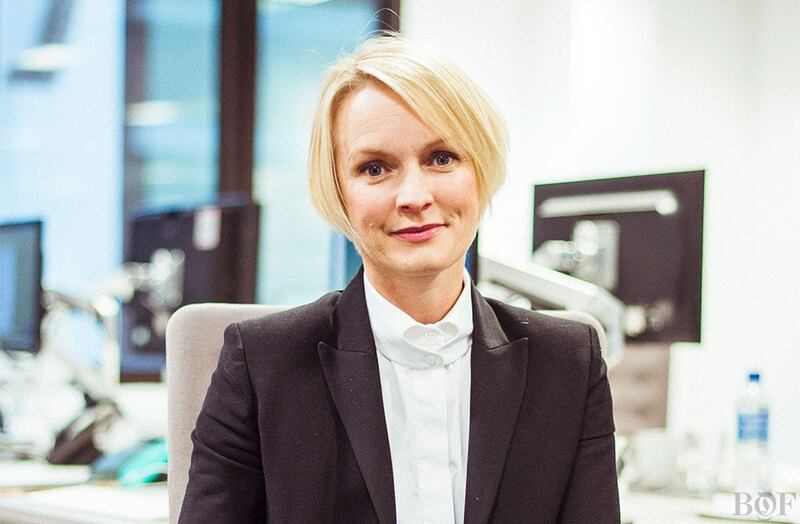
Lorraine Candy | Photo: Morgan O'Donovan for BoF
“I was getting used to advertisers saying the same thing to me: ‘What else can we do digitally with you?’ And we were just offering the same thing as everyone else. I looked at our digital numbers and people were saying to me, ‘We don’t get traffic at weekends, so there’s no point putting any effort into the weekends,’ and I was thinking, with newspapers, Saturdays are the biggest day of the week and that even if we can’t get [more] traffic, how can we get [more] engagement?”
Candy realised that transforming Elle required a complete re-imagining of how the team worked. "The first order of business was to integrate the team. Those that were not able to come with us did not come with us. It was a huge piece of Hr activity: everybody's job description was rewritten, everyone was to work across everything. And I had to tell them very specifically what that would mean, so I brought in the workflow director Christina."
At first, the staff was stunned. “If I take myself back to when it first happened, which was last August, it was a huge shock,” recalls Lowthorpe. “Instead of having two separate teams, which is very traditional on a magazine, we would have one content hub. Literally, we were told that this was the way forward, which it obviously was. [Lorraine’s] idea was to amalgamate the two teams and do more with the content that we were producing. Everyone thought that they’d have to work around the clock to meet a huge number of deadlines. But actually, what happened was what she said would happen, which is that we simply did more with the content.”
Candy saw that the big changes she aimed to implement “would be traumatic” and to help the team make the transition to a new “360” working process, across both digital and print, she brought in Marcus Child, a positive reframer. Unsurprisingly, many regarded the idea with suspicion.
“He came in and everybody, of course, was thinking, ‘What is this dreadful idea of having someone come in and mentor us and get us on the right wavelength?’” says Lowthorpe. “But actually he’s a very clever man. He got us thinking about how great life could be if you could achieve X, Y and Z. And then he made you think that you could achieve X, Y and Z quite easily.”
“He taught us about the language we use in the office,” recalls Candy. “And he taught me the 5-to-1 rule: that for every one negative voice you need five positive voices to counter it. There was one person who said: ‘I’m going to come, but at the end of the day I’m going to leave, because I can’t do this.’ But by the end of the session that person was a cheerleader for the whole thing. It was absolutely extraordinary.”
ADVERTISEMENT
When she joined in January 2013, Hunnicutt led the team through the necessary technical changes, teaching the most technology-averse print journalists about producing content for the web and training the whole team on Elle’s tricky content management system. “She was a real game changer,” says Candy. “She’s really knowledgeable, very firm, she knew the language of all the developers, so we had someone dealing with that and she was great with the team saying ‘You can do this, we’re not asking you to do more, we’re just asking you, when you get that bag in, shoot it for this, and then use it there, there, there and there.’”
Another major change at Elle was the arrival of a large, clean, glass-walled space right in the centre of the office known as #ELLEfashioncupboard, which is nothing like the jumbled fashion cupboards of old. Instead, the sleek new cupboard is a kind of network- enabled stage from which rails of bright, colourful clothes and accessories — including a silk Mary Katrantzou jacket and an Issey Miyake bag — put together for shoots by the magazine's fashion editors (as well as guest designers and brands) are beamed to the world. "The cupboard is the heart and soul of everything. It was digital-first, it drove our Facebook mainly — because people want access. It's about 'new, first, now' and was a key engagement tool. Elle readers started to like it and then it became a cult thing so then we had to build it," explains Candy.
#ELLEfashioncupboard also plays a significant role in Elle's new commercial strategy, which involves selling advertisers cross-platform packages. "Now with 360, if we're selling some activity in the fashion cupboard, for example, a sponsored rail, which we did with Louis Vuitton, they have to be involved with every part of the brand, they can't just buy digital." For Vuitton, the team put together a multi-channel package composed of videos and a print feature, among other components.
“An editorial person will probably be part of most commercial meetings, which most magazines don’t do,” says Candy. “So when Nike, for example, comes to the commercial team and says, ‘We want this in editorial support,’ then what we say is ‘Editorial support is not what we’re selling here. What we’re selling is a relationship. If you spend this much money, you will have a preferred relationship with us and we will do things around what you’re doing, if it’s buyable and credible editorially.’ It has got to work for the consumer.”
Covers, too, are subject to high levels of multi-platform planning to make the content work harder. "All of our big covers are now massive contracts and they [drive] a whole year's worth of activity if possible. All of our stuff online is evergreen. Rihanna was a big thing — we did London Fashion Week, river Island, the album and video. All the images and interviews were done in the eight hours that we had with her and then planned for the rest of the year. You have to have a lot of activity around what you do."
For the most part, the results of "Elle 360" have been impressive. Facebook engagement is up a whopping 261 percent. In fact, the company now earns an average of 35,000 likes, comments and shares per day. Mobile traffic has exploded with unique visitors up 99 percent and pageviews up 82 percent. Desktop users have increased by a mere 30 percent, but that's because the Elle website needs a serious revamp, something that has been slowed by the fact that the entire global publishing group at Hearst, which owns Elle, shares the same web platform, which is due to be upgraded this year. But perhaps most interesting is that spend on basic banner advertising is down 91 percent year-on-year, while overall revenue from commercial partnerships across all digital platforms is up 52 percent, year-on-year, due to increased demand from premium advertisers.
Speaking to staff at Elle, it seems that everybody is drinking the proverbial Kool-Aid. They're all evangelists for their new, digitally-connected ways of working. Indeed, everyone says the same thing: the team generates more and better ideas now, and has become a collection of polymaths. They think like online journalists, social media experts and photo editors, whatever their individual day job might be, and all departments now work alongside each other — literally, thanks to the hot-desks.
“Before I was thinking about how to fill space within the magazine, whereas now I am thinking about how I can create space for more stories across the whole brand. It sparks more ideas,” says Lowthorpe.
ADVERTISEMENT
"Yesterday, I was on a shoot for Elle Collections and, today, I have come in and done some buffering of tweets and Facebook," says Gowans. "When I joined I was trained in the CMS [content management system] and everyone here can do that. I size the images, build picture galleries, and tweet the story. I also do a news shift with Leisa Barnett every couple of weeks. At places I've worked in the past, you don't speak to the editor, but through hot-desking I get to speak to everyone: I've sat next to Lorraine. It was scary, but nowhere else have I got the chance to have my views heard by the editor."
MEET THE ELLE 360 TEAM
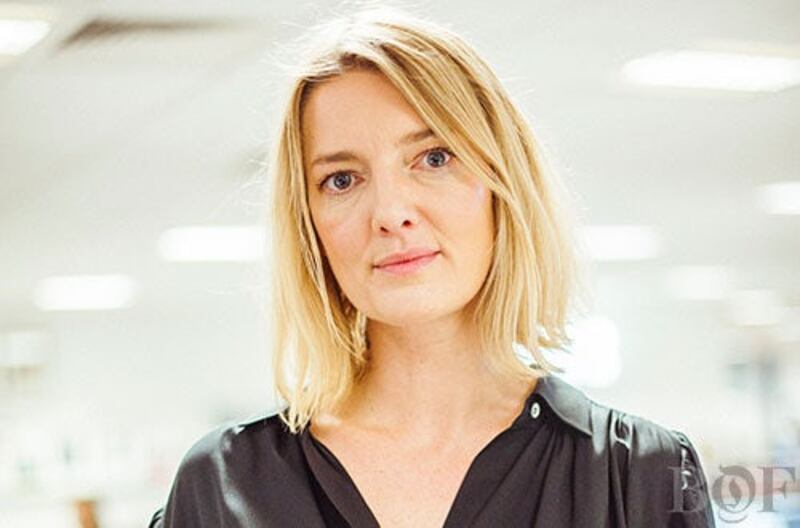
Rebecca Lowthorpe | Photo: Morgan O'Donovan for BoF
Rebecca Lowthorpe
Fashion Features Director
"When I used to go to an event, you would just go and be polite and charming, but now you go to an event and it's interesting and you speak to lots of people and you write your news story the next day. This has reignited fashion for me. When you've been on a magazine for nearly 10 years, I don't think I would still be here at all if this hadn't happened. I want to be excited when I work somewhere."
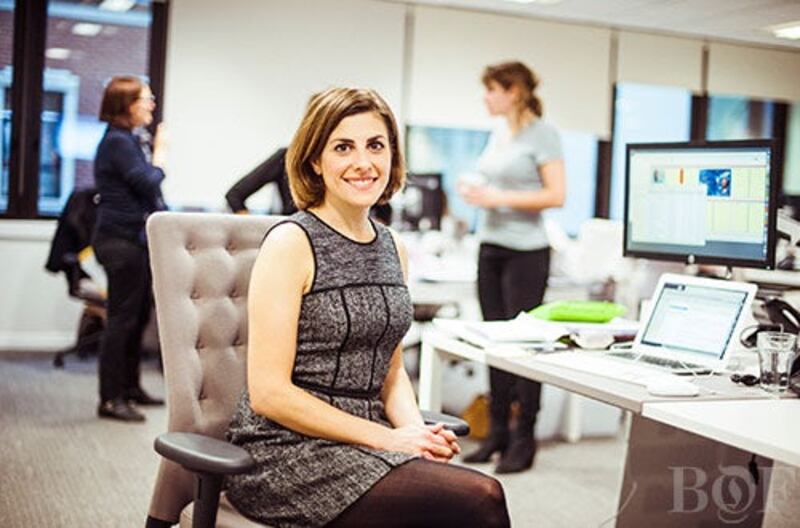
Christina Simone | Photo: Morgan O'Donovan for BoF
Christina Simone
Workflow Manager
"Everyone has to contribute to the website on a daily and sometimes hourly basis. So first, I made a skeleton crew of people to come in an hour and a half earlier than they usually do and work very closely with Leisa to produce the news in the morning. Depending on where people are with their print responsibilities, they either have one or two shifts a month or every week. They work from nine to noon to get through the morning news stories. It has helped people be connected to the online content cycle, so they think more like news editors now, as well as thinking like monthly editors."
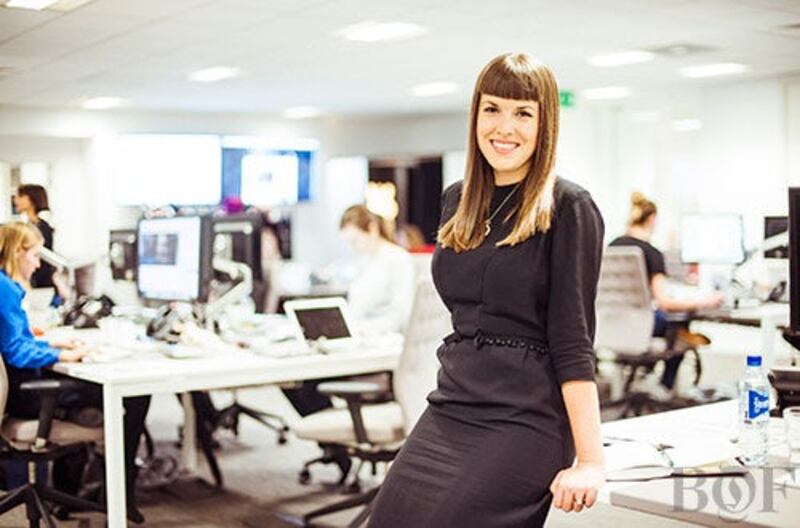
Phebe Hunnicutt | Photo: Morgan O'Donovan for BoF
Phebe Hunnicutt
Digital Director
"It's like what Bradley Wiggins said about the way that he won the Tour de France. You can't change the big thing immediately, but you can look at where you can optimise. That was what I did first. Planning structurally on a monthly, weekly and daily basis and even hourly basis really helped."
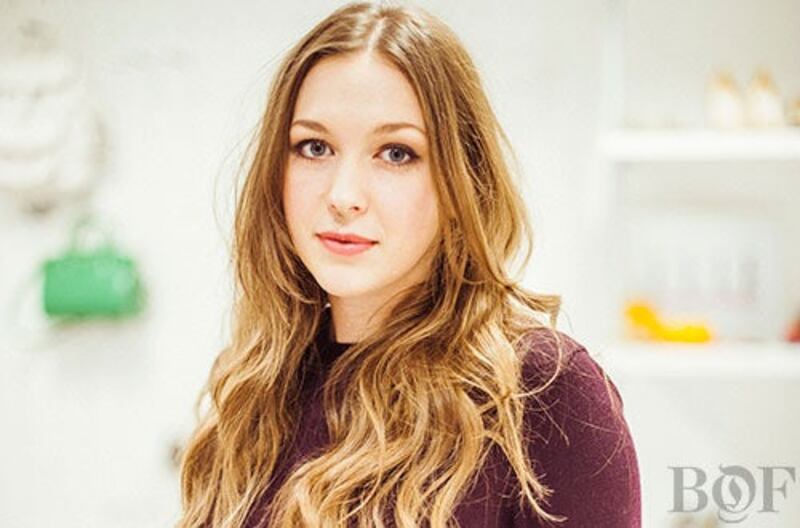
Charlie Gowans | Photo: Morgan O'Donovan for BoF
Charlie Gowans
Fashion Assistant
"What hot-desking achieves is a real appreciation of what everyone does and it builds respect and trust. You have more ideas because you might get into a conversation with a different person every day and that spurs an idea for a gallery or a trend that could be discussed in the next print issue. It's not just three people deciding what's in fashion for that season, it's the whole team — and that is such a melting pot of different back-grounds and ages."
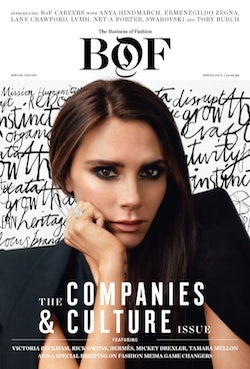 Order your copy of The Companies & Culture Issue, where this article originally appeared, for delivery anywhere in the world at shop.businessoffashion.com, or visit Browns (London), Colette (Paris), 10 Corso Como (Milan), En Inde (New Delhi), Holt Renfrew (Toronto, Vancouver, and Calgary), Lane Crawford (Hong Kong), Le Mill (Mumbai), Liberty (London), L’Éclaireur (Paris), Opening Ceremony (New York and London), and Sneakerboy (Sydney and Melbourne), Wardour News (London), Mulberry Iconic Magazines (New York).
Order your copy of The Companies & Culture Issue, where this article originally appeared, for delivery anywhere in the world at shop.businessoffashion.com, or visit Browns (London), Colette (Paris), 10 Corso Como (Milan), En Inde (New Delhi), Holt Renfrew (Toronto, Vancouver, and Calgary), Lane Crawford (Hong Kong), Le Mill (Mumbai), Liberty (London), L’Éclaireur (Paris), Opening Ceremony (New York and London), and Sneakerboy (Sydney and Melbourne), Wardour News (London), Mulberry Iconic Magazines (New York).Brands including LVMH’s Fred, TAG Heuer and Prada, whose lab-grown diamond supplier Snow speaks for the first time, have all unveiled products with man-made stones as they look to technology for new creative possibilities.
Join us for a BoF Professional Masterclass that explores the topic in our latest Case Study, “How to Turn Data Into Meaningful Customer Connections.”
Social networks are being blamed for the worrying decline in young people’s mental health. Brands may not think about the matter much, but they’re part of the content stream that keeps them hooked.
After the bag initially proved popular with Gen-Z consumers, the brand used a mix of hard numbers and qualitative data – including “shopalongs” with young customers – to make the most of its accessory’s viral moment.